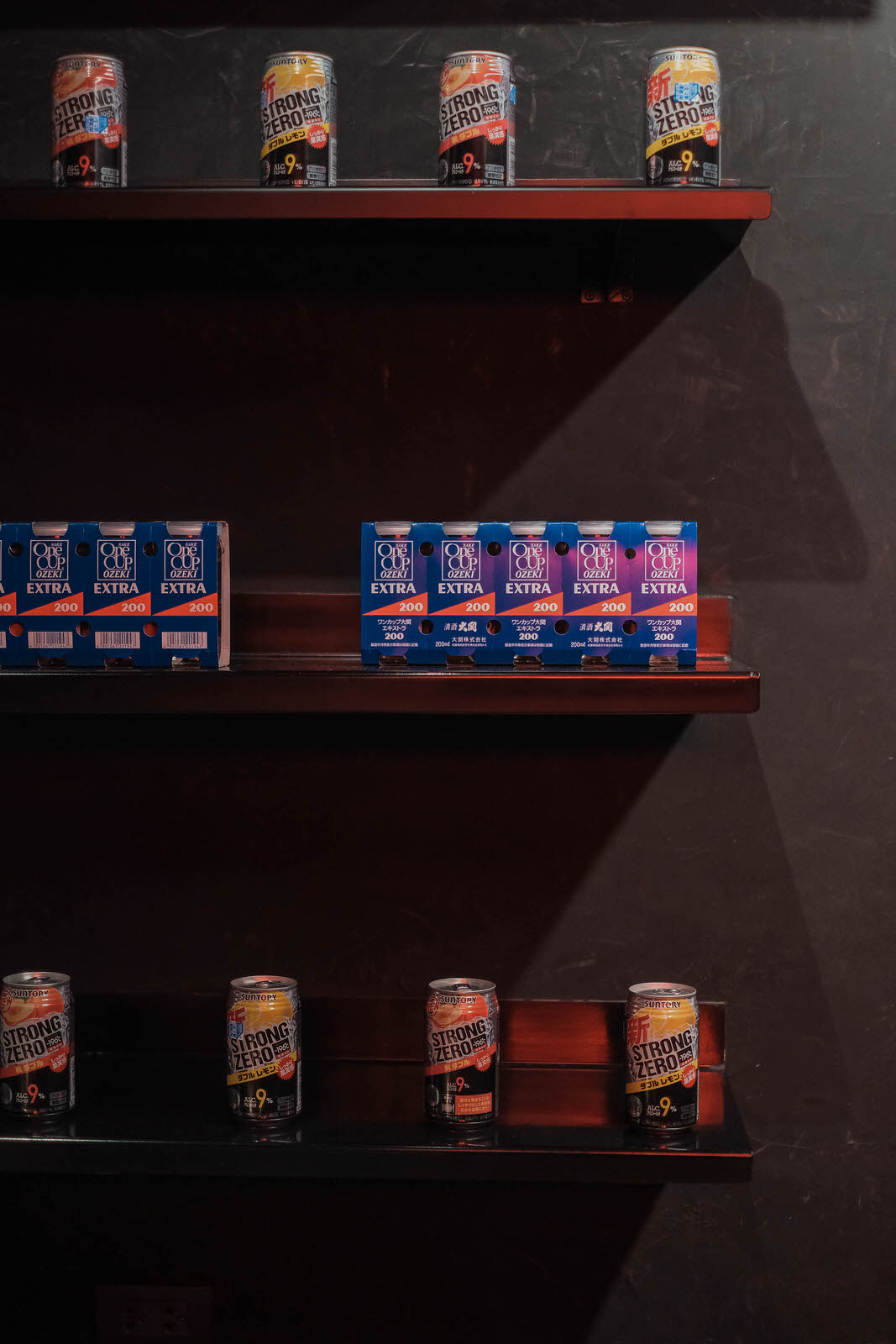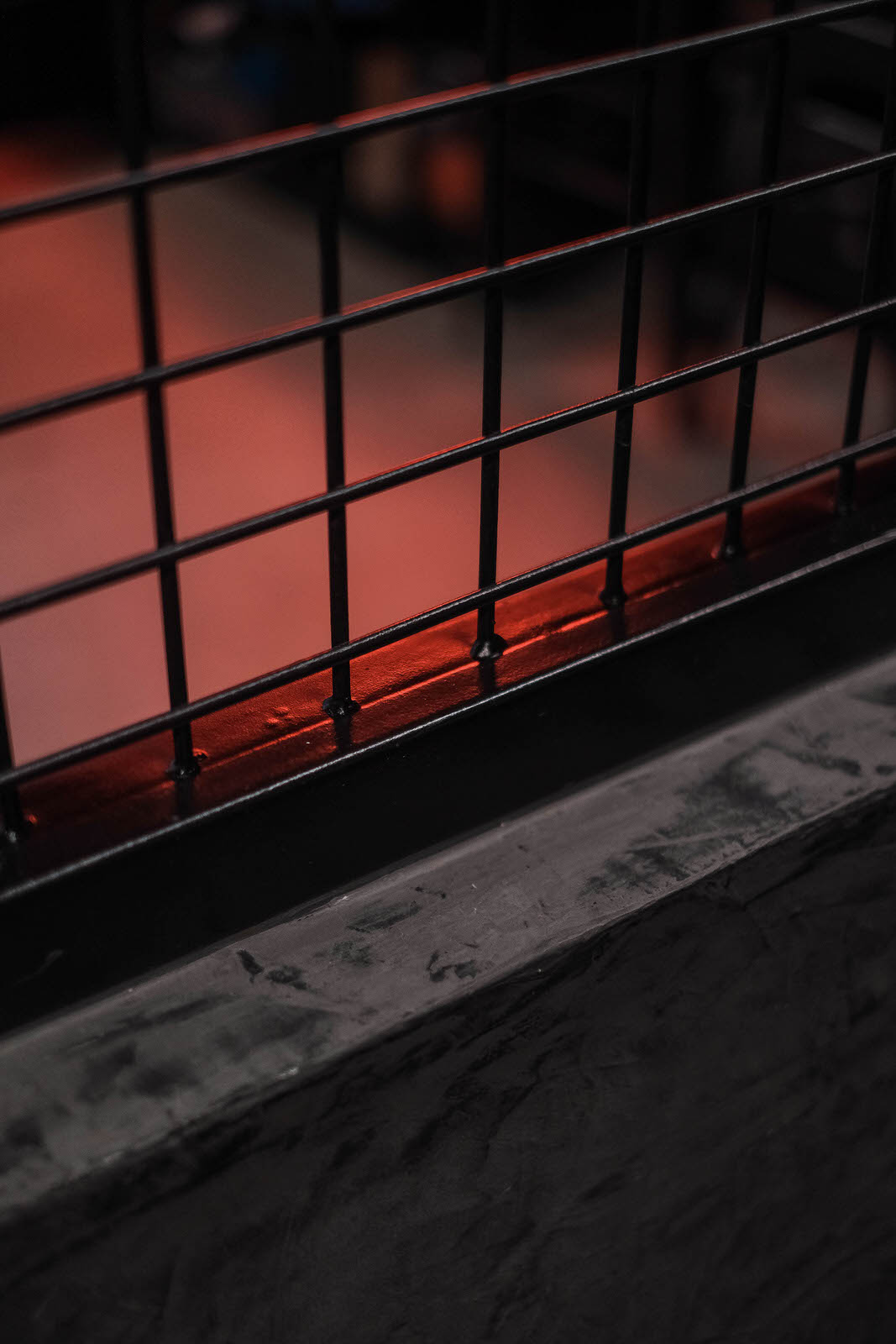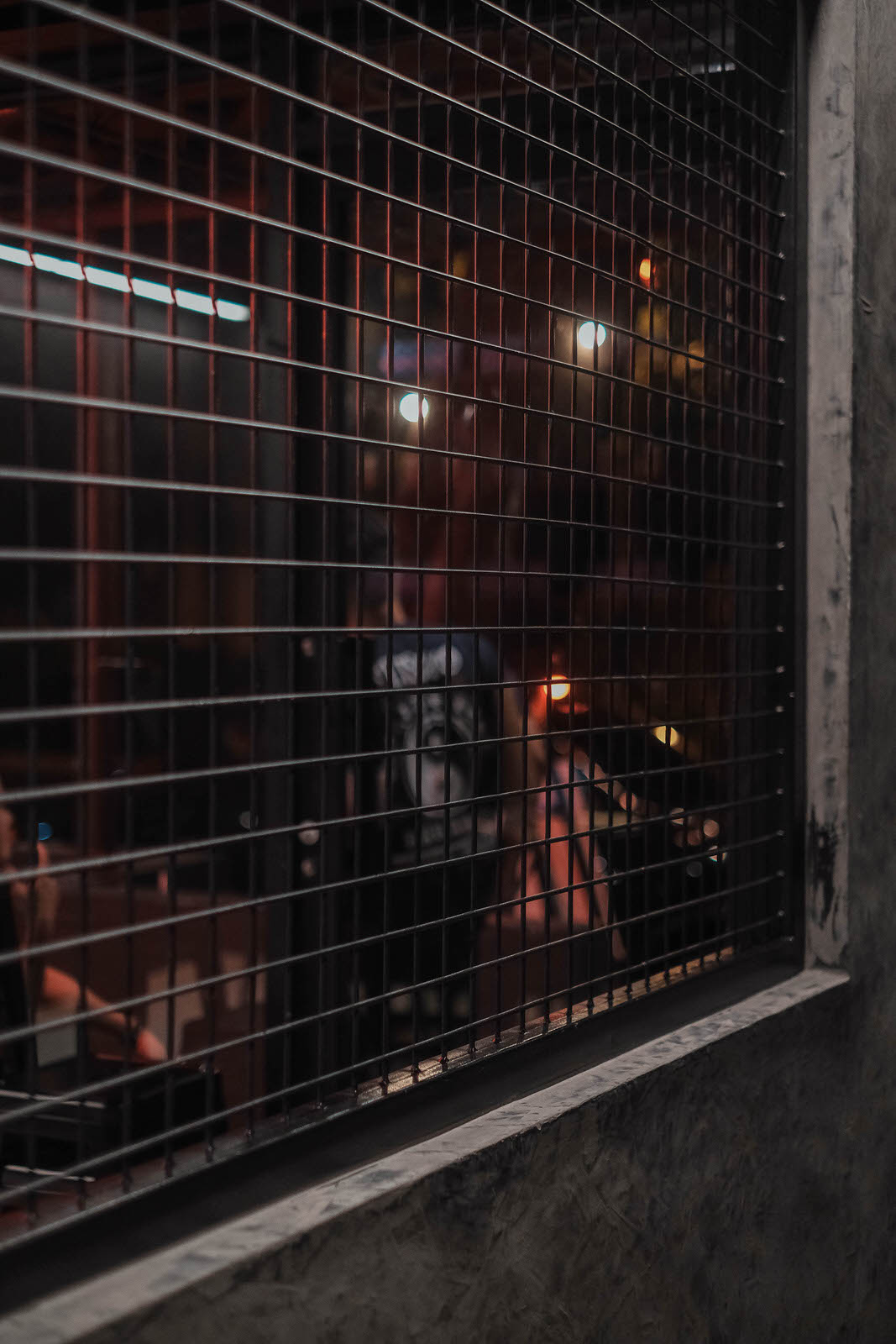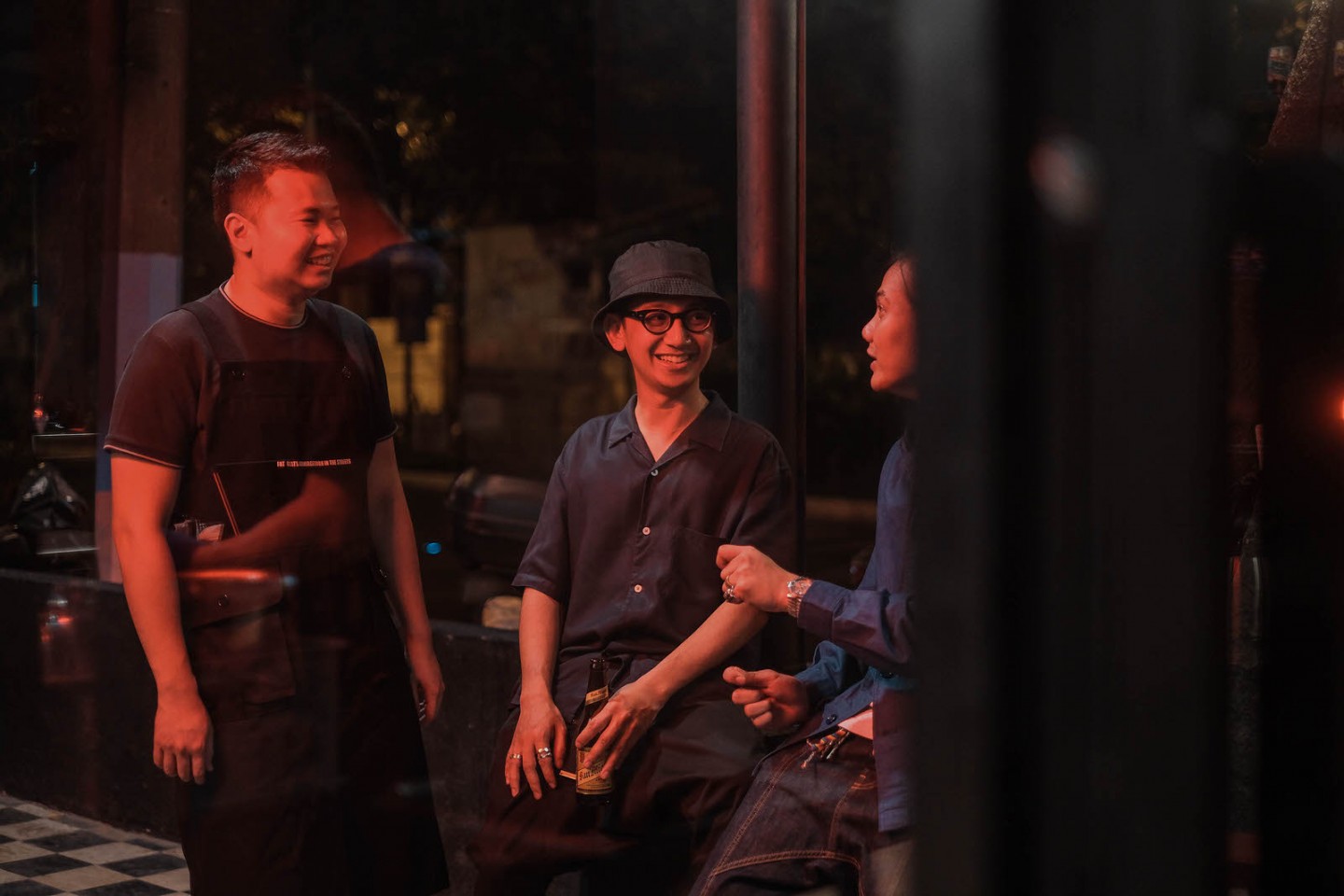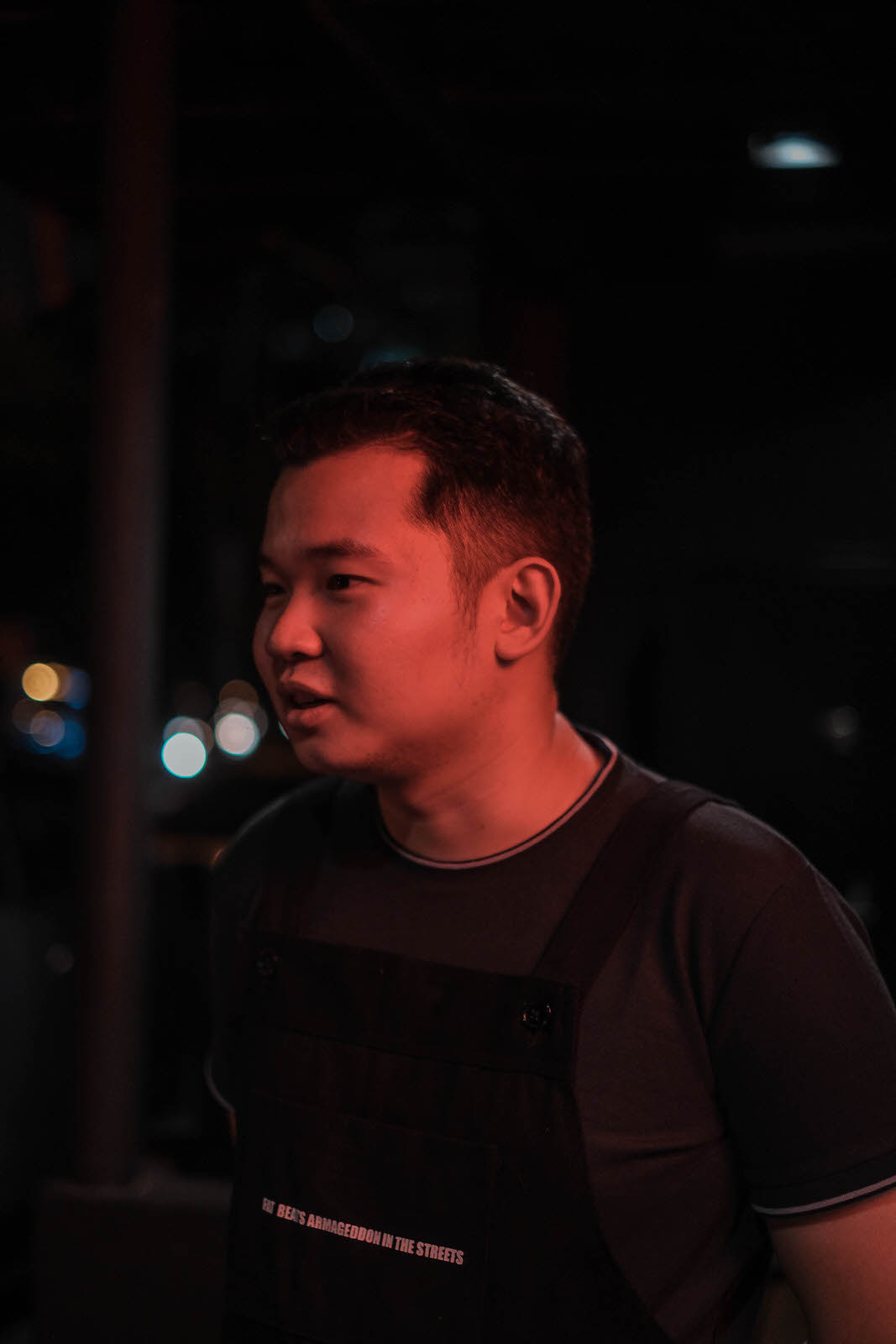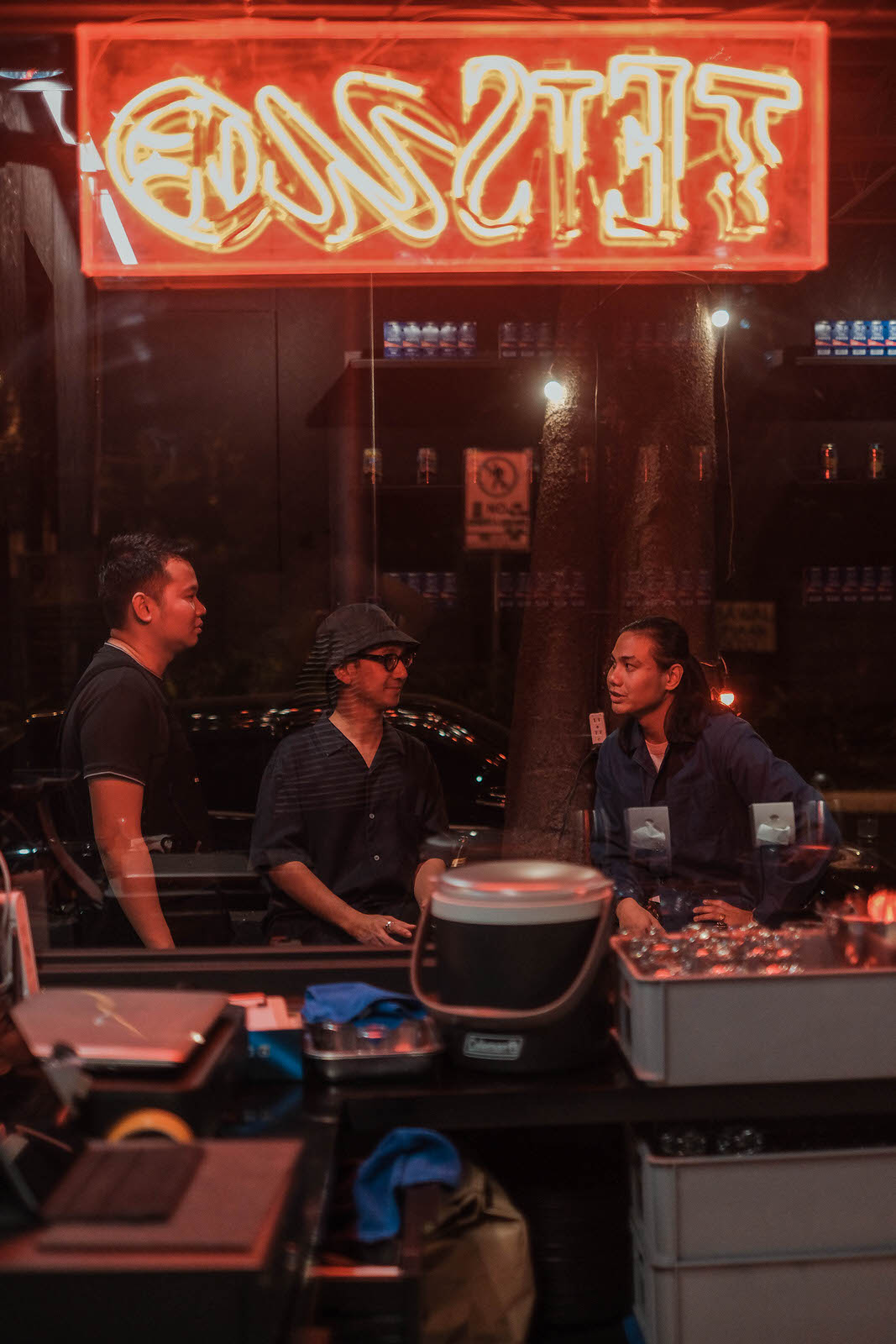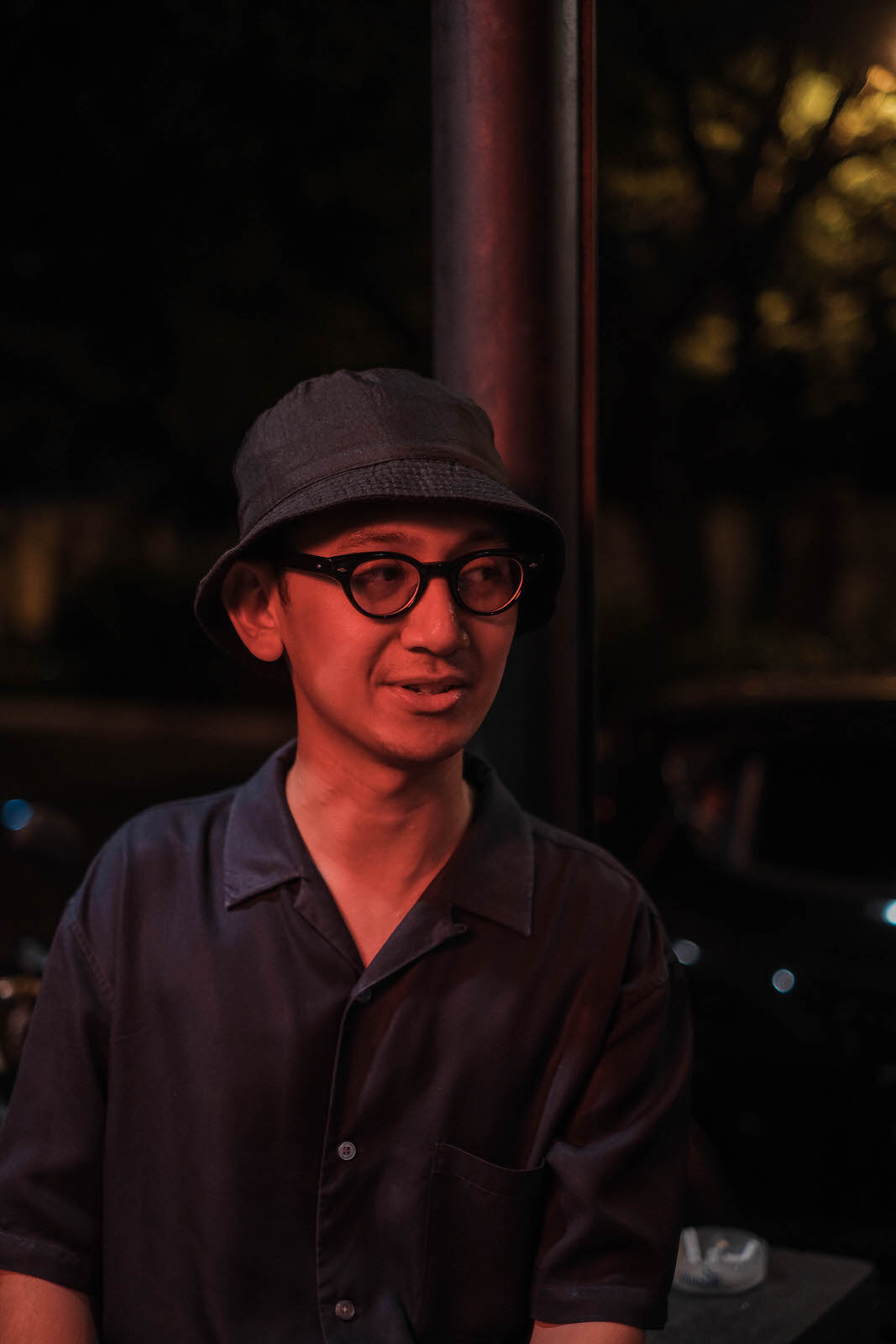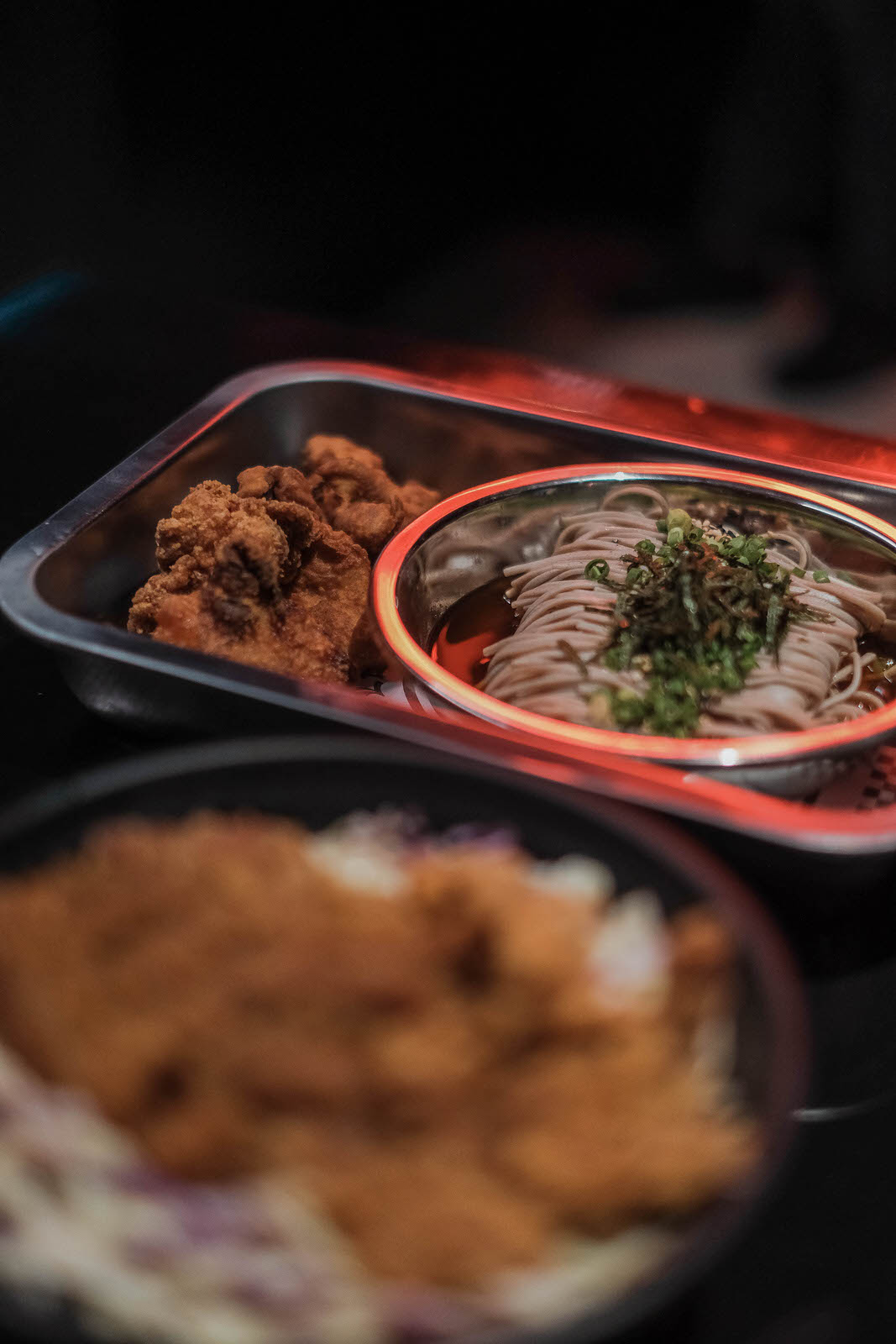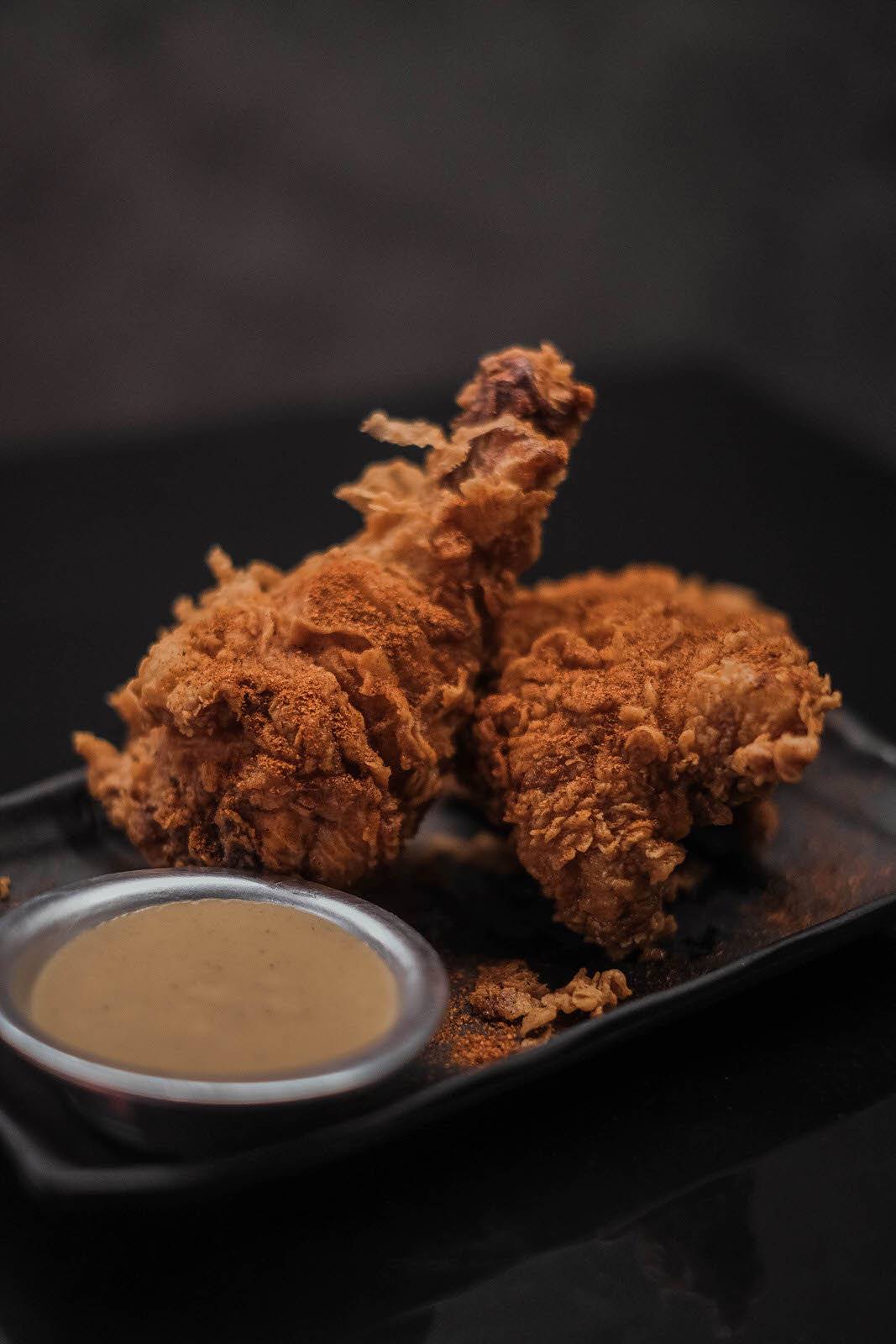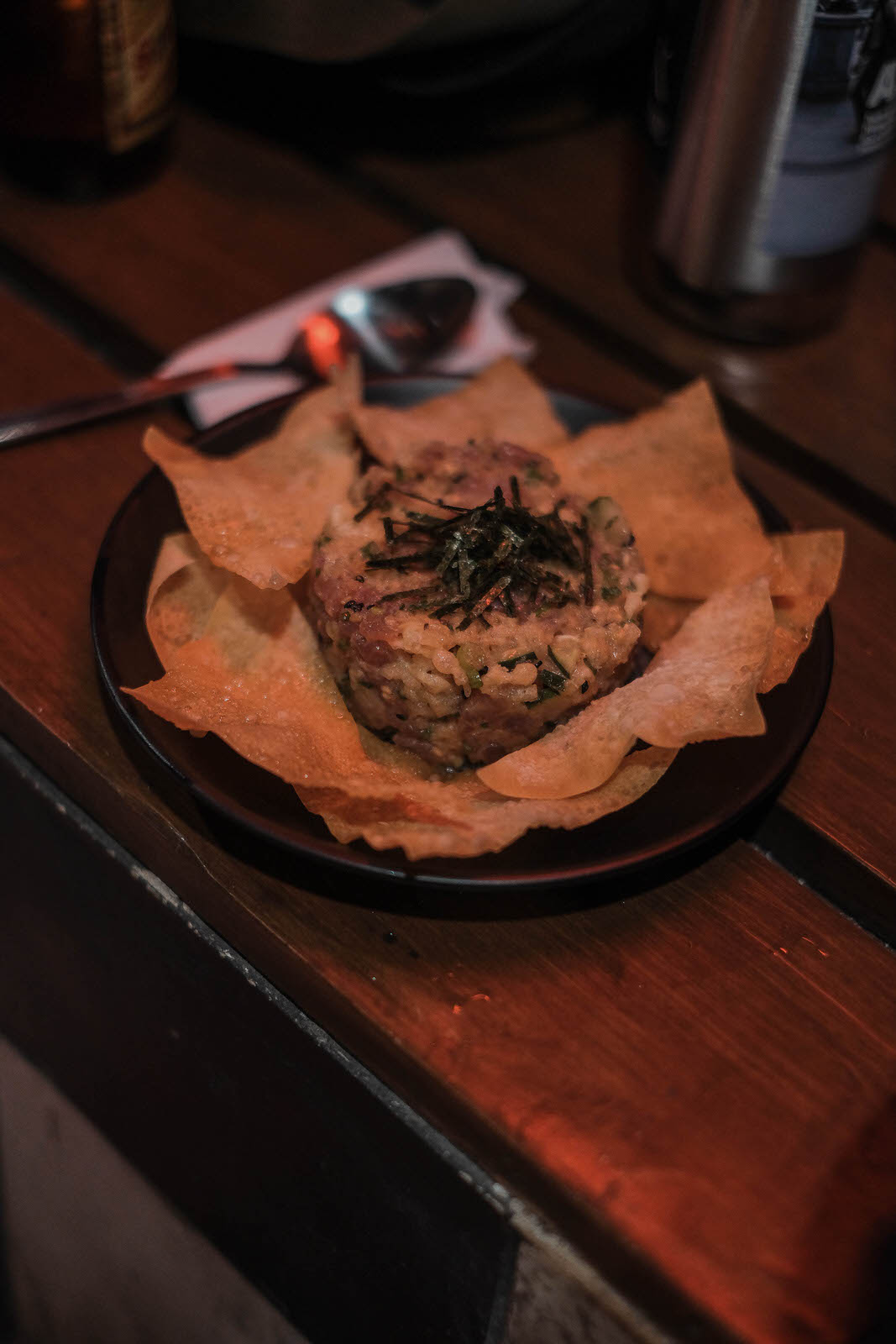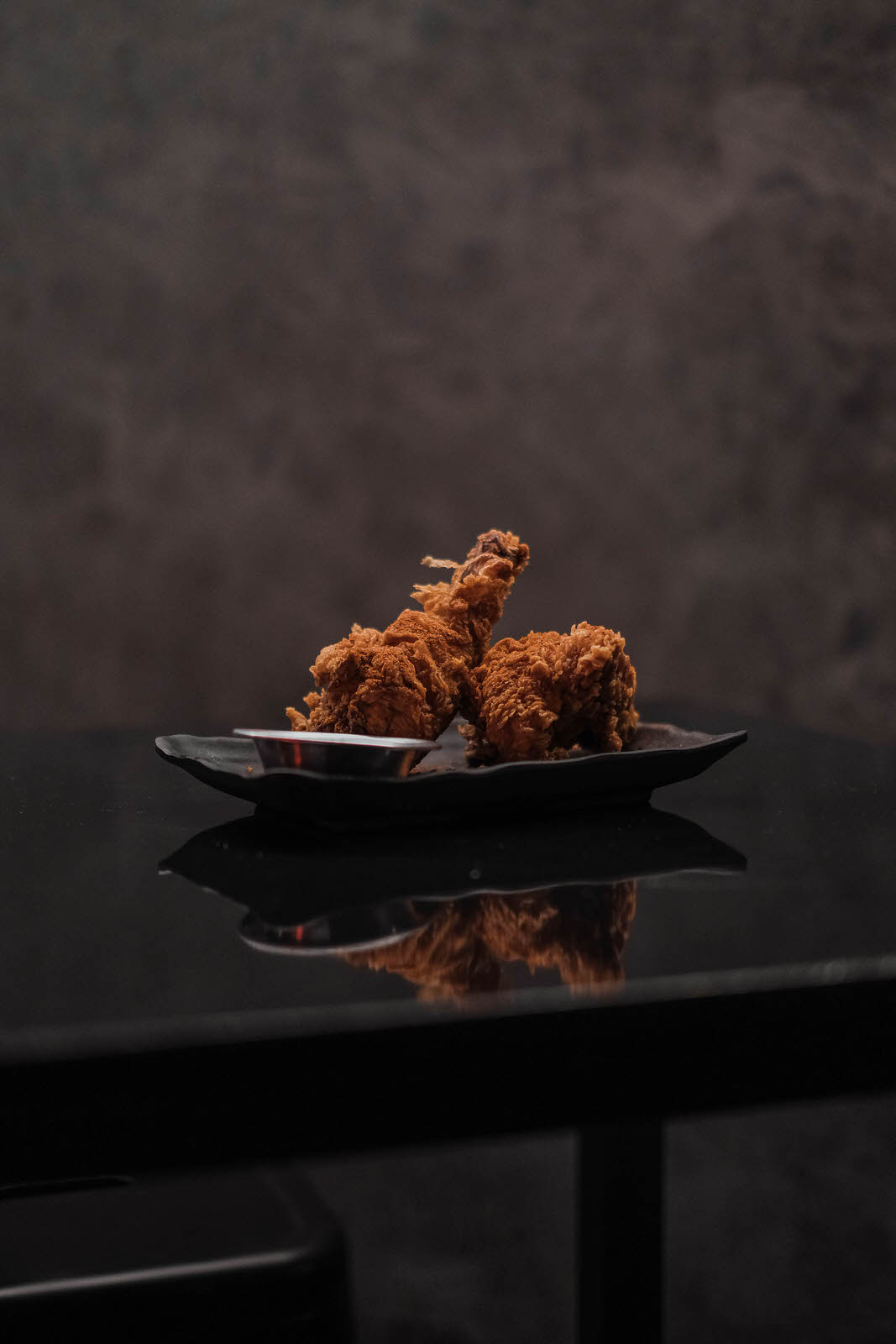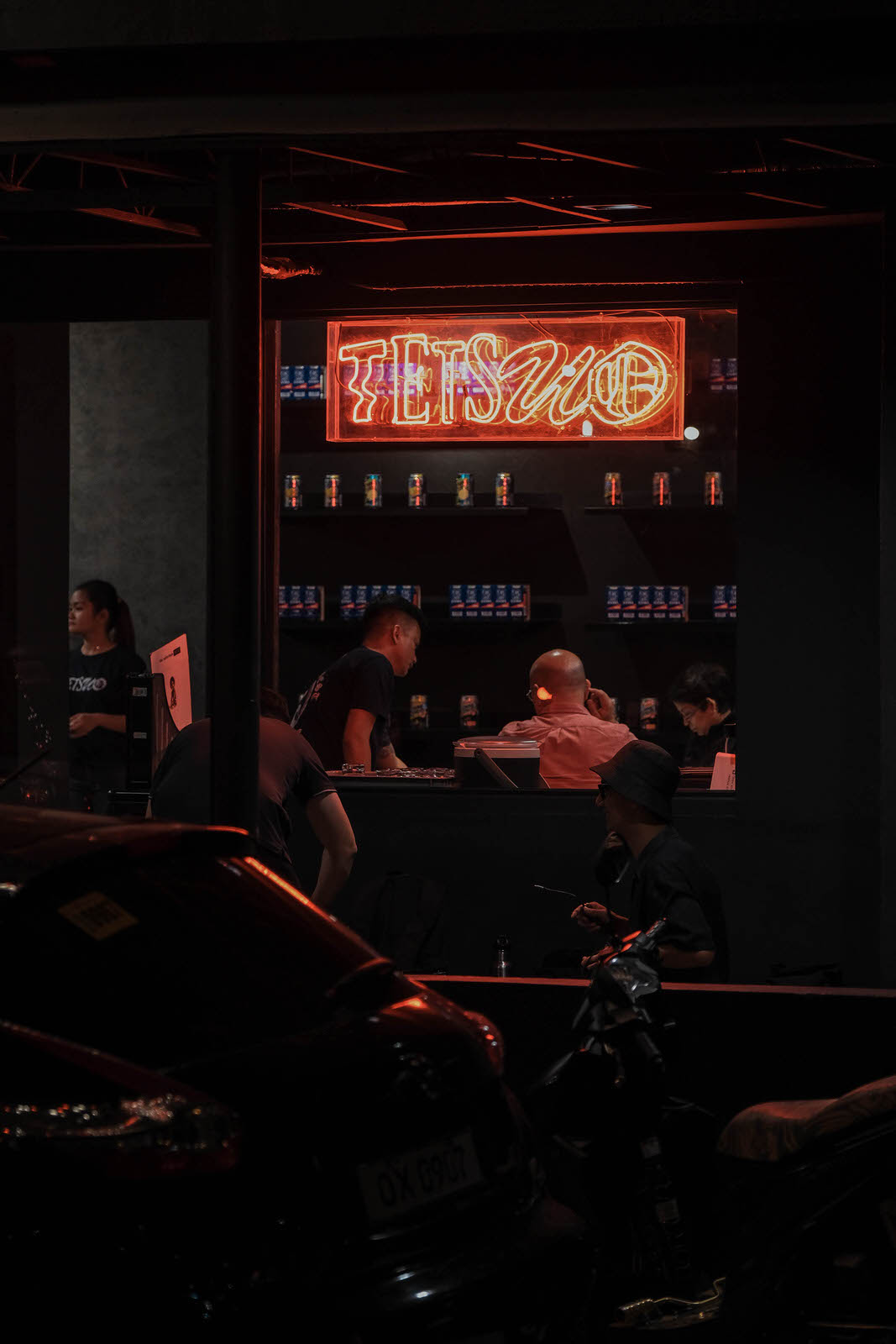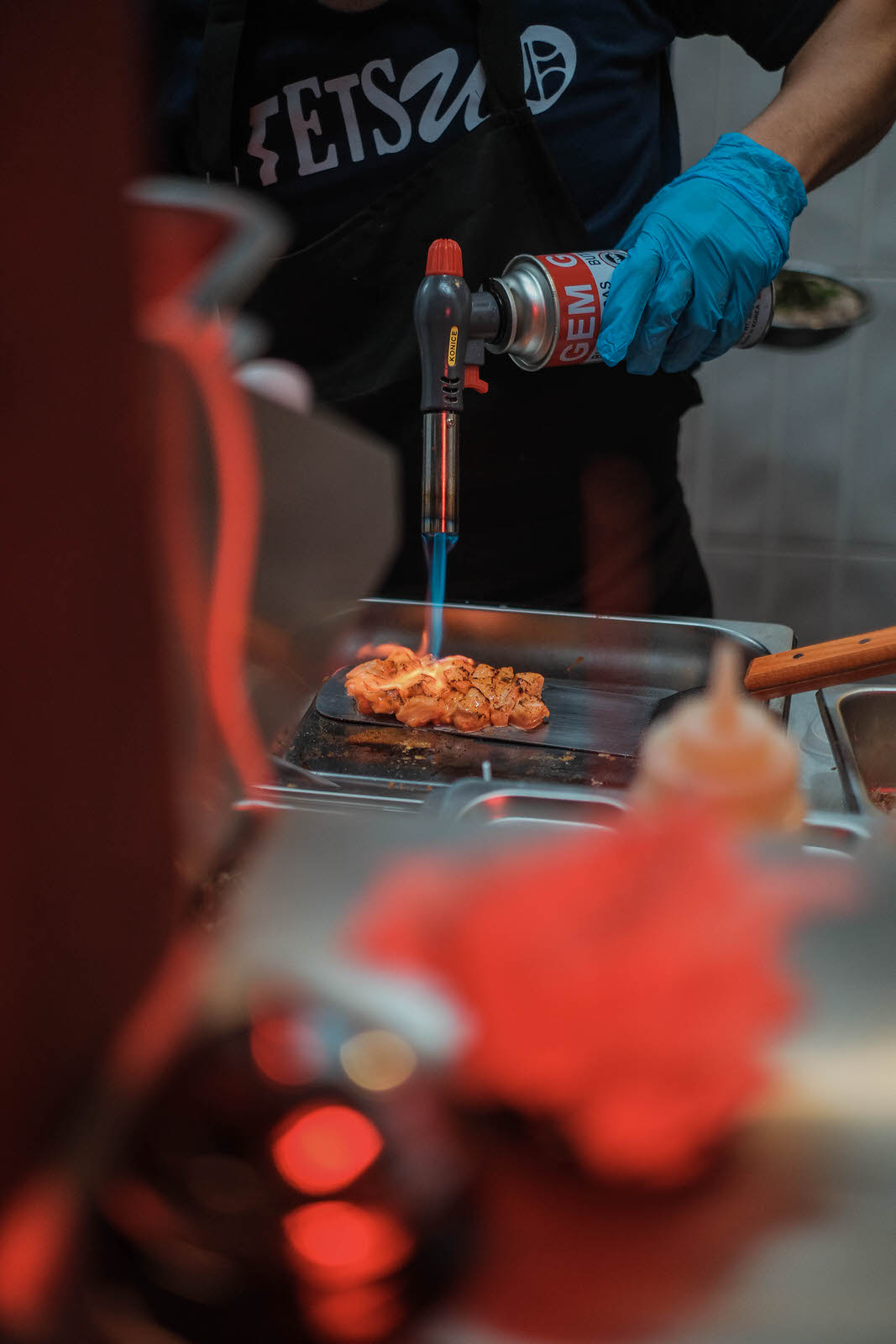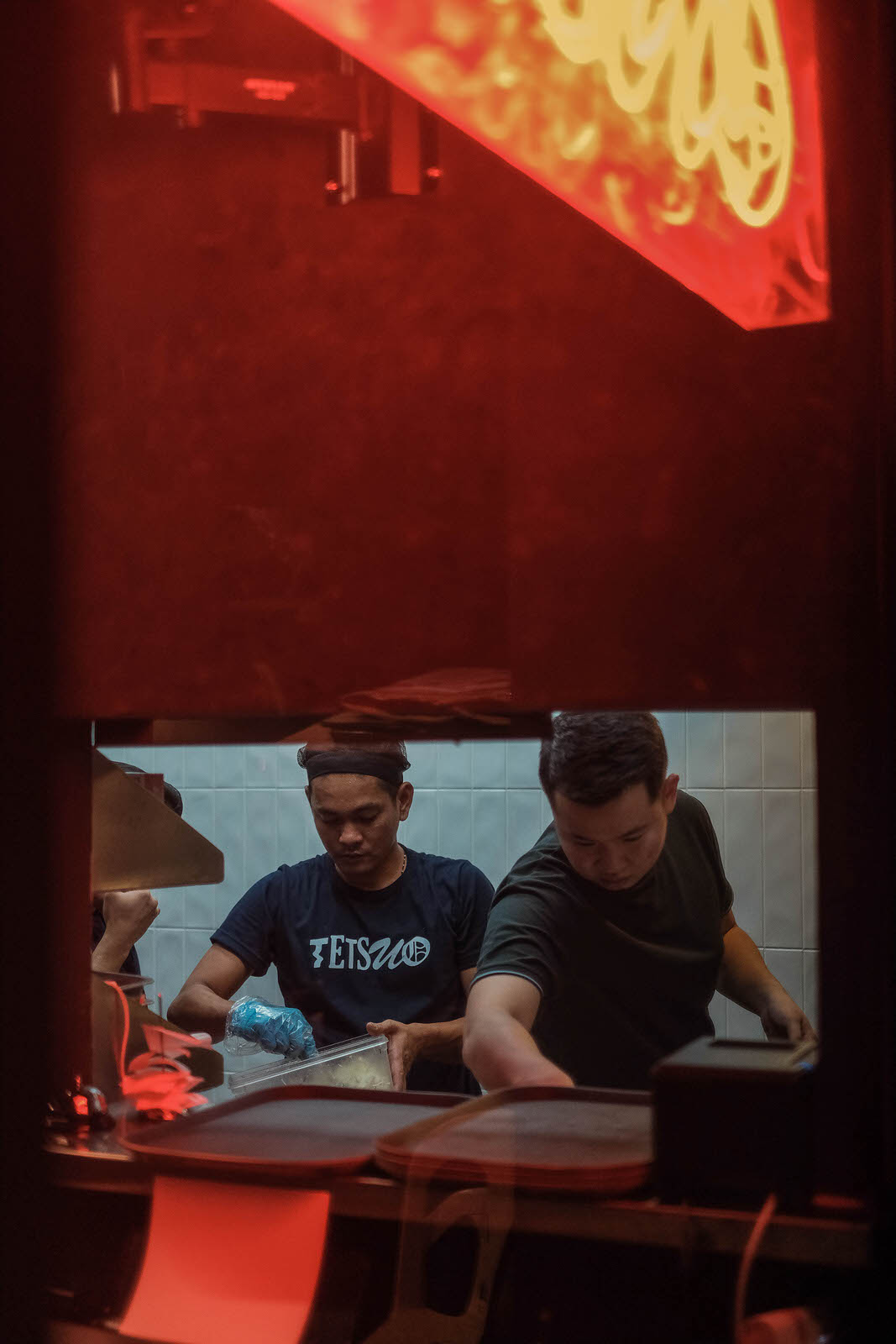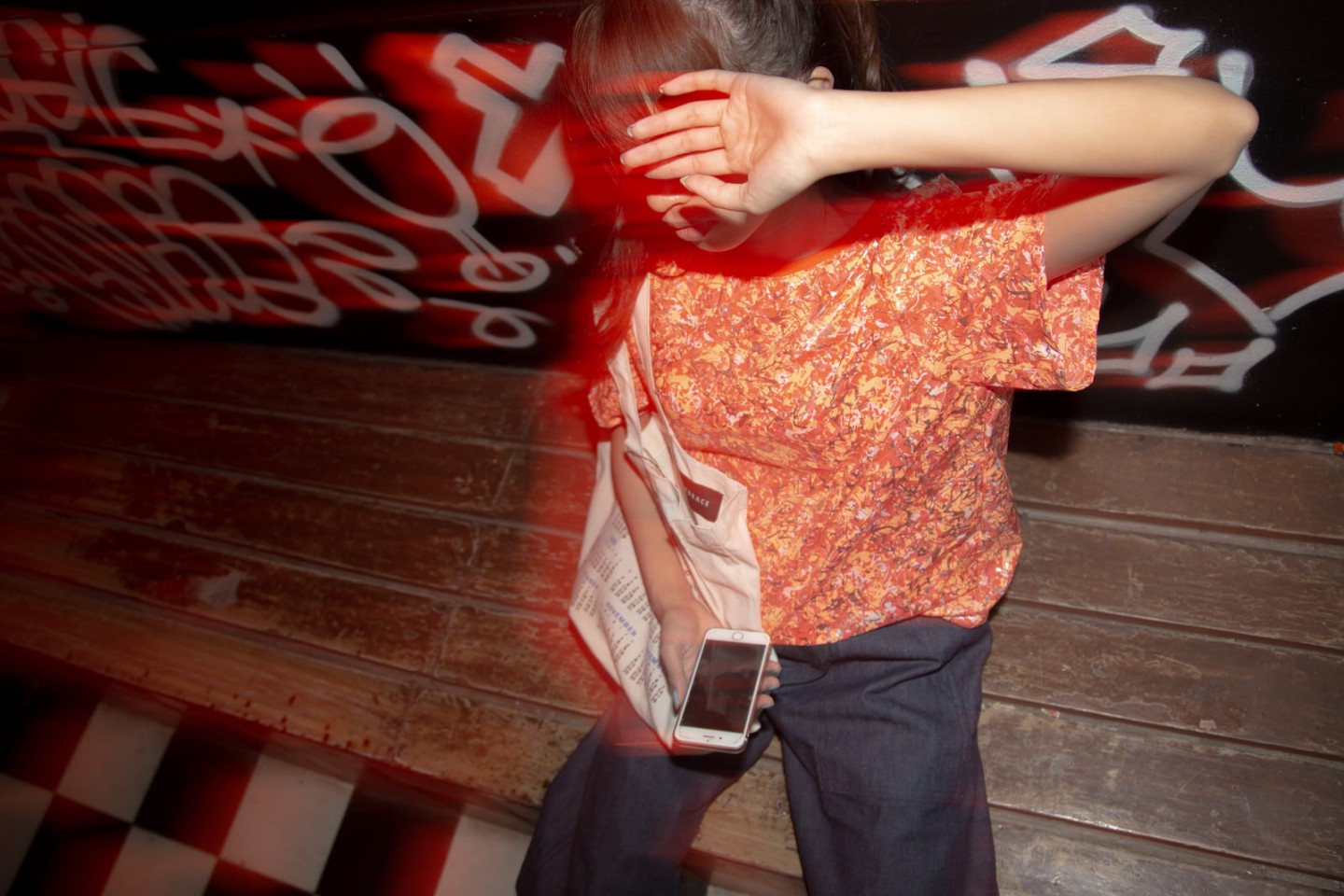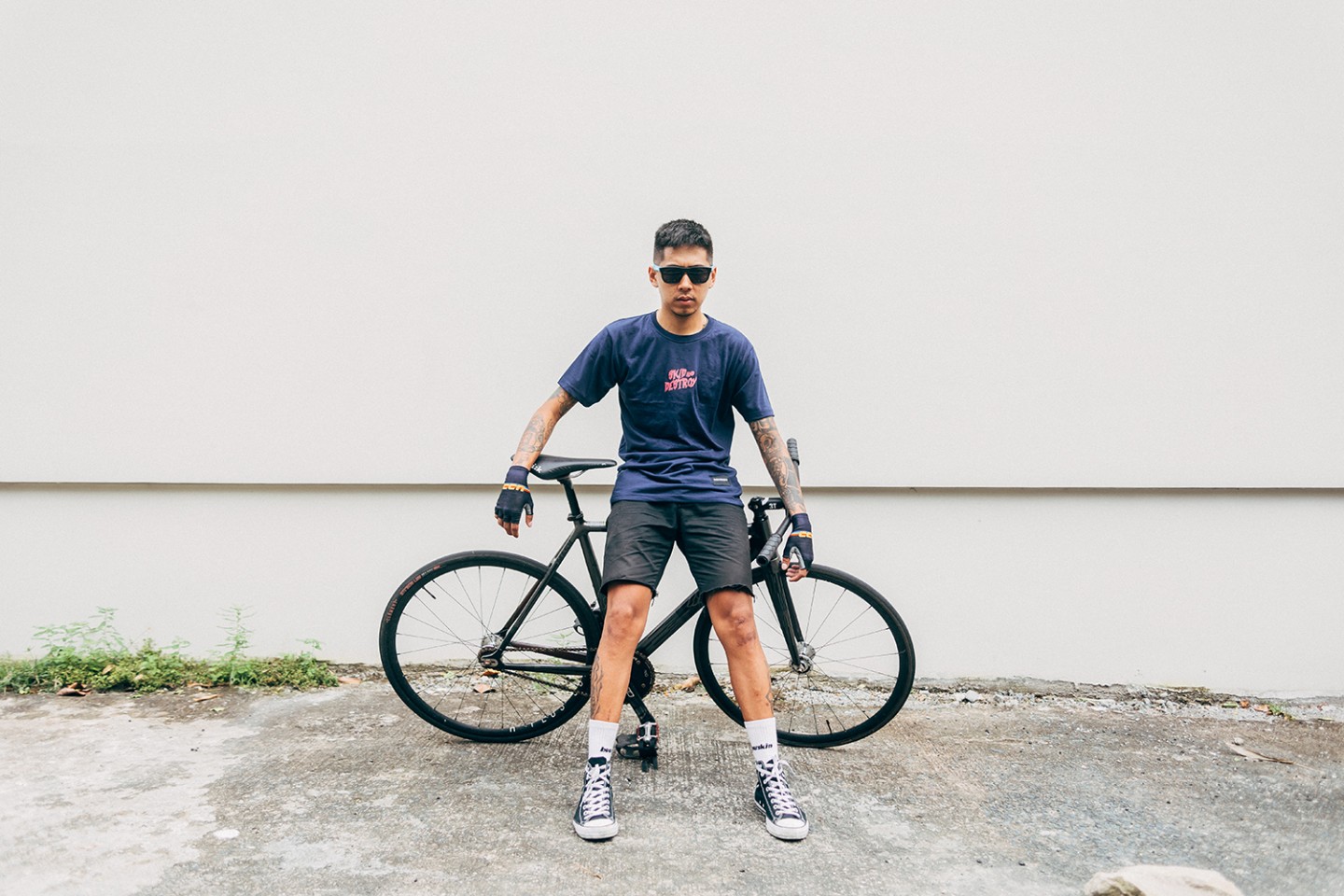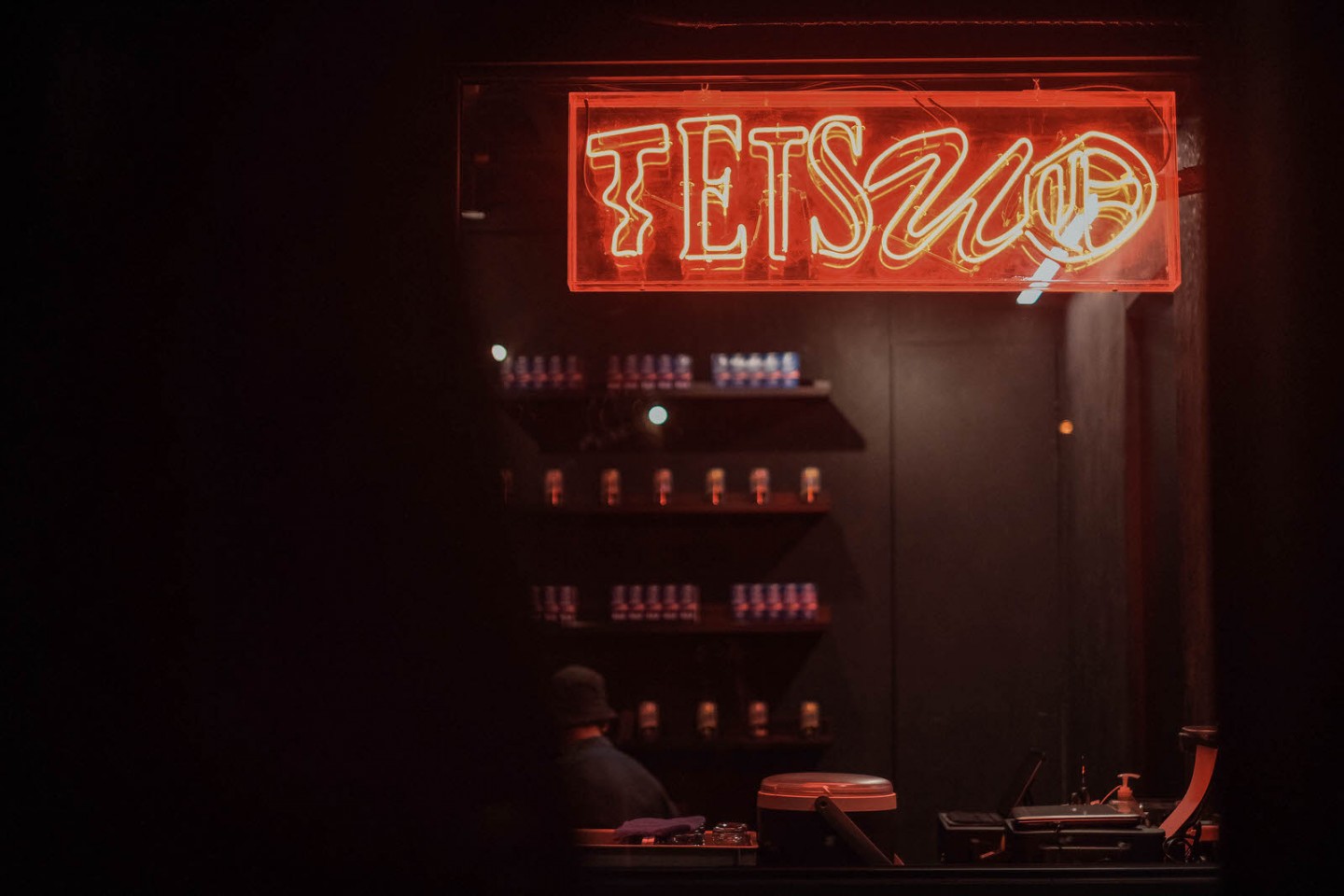
Tetsuo is (finally) in Makati. Many of those who have always been curious to try the brand but dreaded a trip to the North™ can finally see what their chicken has to say about them. “It does feel a bit like a homecoming of sorts,” Sean Bautista, one-third of the current Tetsuo teams mentions to me while viewing the new location, “We’ve known from the start that we wanted to be in Makati.” One would be hard-pressed to disagree with him at this point in their 4-year journey as a food concept brand, with their voice seemingly in-line with the more discreet offerings of nightlife that an urban city like Makati could offer. Situated beneath Boogie on Kalayaan Avenue, their new space is less restaurant and more modern art bar, with black walls and minimalist furniture, as well as shelving filled with Strong Zero and One Cup Ozekis (staples in “konbini”or Japanese convenience store alcohol offerings). With new menu items, table service, and extended hours, it remains as Tetsuo as it is in Katipunan, yet seemingly wholly different for the new setting it finds itself in.
The reason the change isn’t so jarring is the fact that the identity of Tetsuo seems rather intact — a mixture of rebellious design and post-modern fusion of western and eastern aesthetics, with a voice that goes beyond standard restaurant brand etiquette. This same identity is what drew in a large following of loyal patrons, odd bunches of people from audiophiles and gourmands, to fashion-heads and japanophiles. It’s a curious thing to see how a brand’s identity can resonate with so many different cliques of people, and yet that’s exactly how Tetsuo runs their image — based on the very distinct personalities of the people behind it and the culture they resonate with.
As far as brand images go, much has evolved in today’s modern market. Brands nowadays have started to act and behave apart from what they sell, towards creating individualized identities that generate their own respective quirks, values, traditions, and even advocacies. Yet as more and more brands do this, the authenticity that arises from true brand development gets muddled in quick PR spins and cliche marketing ploys to imitate a brand personality. This is the challenge Tetsuo had to face as a newly established brand in a decade of inauthentic personalities — how will it create an identity that will resonate with their audience?
Surprisingly, or rather unsurprisingly, the Tetsuo team had no qualms about audience reciprocation. “The way the three of us are,” says Timmy Jacob, managing head of the Tetsuo team, “we are very hands on with the brand. We make sure our personalities shine through.” Sean adds to this, with a defining characteristic that seems to permeate into everything Tetsuo does, “We weren’t conscious of [brand resonance] at first. We focused on something we wanted to enjoy with our friends.” This “unconsciousness” in effort on the team’s part is something rather unique in today’s ultra-audience focused world, and allows Tetsuo to hold a special foothold in the local food concept market.
As more brands continue to try and appeal to the general demographic, they tend to lose that edge of individuality that created a distinct appeal to their brand in the first place. Tetsuo started off on the other side of the spectrum for this, fully focused in their understanding what they wanted the brand to be, and to maintain that distinction of quality and uniqueness in every aspect, from design to the food proper. Wesley Chan, the Head Chef, states that in making the menu, he would always ask himself “Would I order this for myself?” and put himself in the shoes of his teammates. “It is a combination of all our palates. We don’t really limit ourselves to any one cuisine,” Wesley continues.
Their brand identity, as with any truly unique personality, is hard to encapsulate as it is. Despite the apparent Japanese approach in design (Tetsuo’s namesake coming from both the 1988 anime film Akira as well as 1989 japanese cyberpunk icon Tetsuo the Iron Man), their amalgamation of personalities demonstrate themselves through many more aspects of the brand. The food itself, ranging from the Japanese Karaage and Soba, to the American Southern-style fried chicken, to even the Filipino pandesal and ice cream as represented by their Ube Mandu Buns, shows the difficulty in nailing down the brand towards a specific genre of food. Then you have Tetsuo Nights, special one-night events that serve as an extension for the owners and their peers to explore what they can do with the space beyond serving food.
During Tetsuo Nights, you have events such as Emo Night, a chaotic slur of 2000s pop-punk music and questionable alcohol served in a rush of nostalgia induced emotion, as well as Natural Ingredients, a music discovery and workshop hosted by a variety of DJs and producers in an effort to spread awareness and understanding on the different types of music out there. Even their foray into food explores the usage of these nights through events such as their Tetsuo Research Society, which showcases speciality beverages such as that of Made in Matcha and 35cl Cocktail Co.
It is through this very multi-faceted approach that makes Tetsuo as a brand so difficult to define in standard marketing terms. They go beyond food at the best of times, and yet at the same time keep food as the core of their business, all while catering to a large array of interests and activities that span an even larger array of would-be diners and patrons. This ability to constantly keep active within the community and culture that the team finds itself in is what lends the longevity to the brand, going beyond simple metrics such as revenue versus cost as a means of growth. Personality, whether as an individual or as an entity, needs to remain dynamic in an ever changing culture; Tetsuo just has the unique ability to be able to do this without really being conscious of it in the first place.
Makati remains a new endeavor for the team, despite the strength of their brand, with many new plans and features being implemented on a day-to-day basis. The team, however, is used to this kind of figuring-it-out-as-you-go tactic. “We definitely charged a lot to experience then,” Sean remarks on the earlier days of Tetsuo, “But I think we know a little bit more now.”
Words — RA Alfonso
Photos — Marvin Conanan

